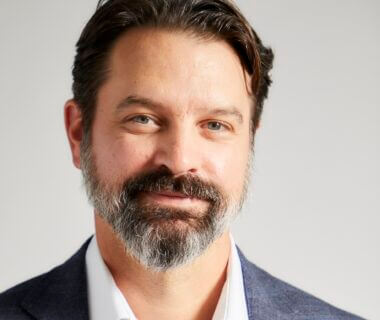My wife and I still live in a fixer-upper that we bought 11 years ago – and somehow it seems like we are “always fixing, never upping!” As it is with many first-time homebuyers, a lot of our early experiences with “pros” weren’t too positive. We didn’t really know how to shop for the services we needed, and hadn’t been in the neighborhood long enough to have the strong network we do now for advice.
Yet, even now, there’s a funny thing: After all these years, I still don’t have a solid understanding of the best order of operations for the work that remains. We are beyond cosmetics – this is not just a “website refresh” at this point. We are looking at some real infrastructure work. Knowing what to do first, and how to sequence it into smaller efforts that build on each other with time, would be immensely helpful in prioritizing our efforts and budget. Of course, identifying a clear end goal will inform this work too.
As it is for me in the DIY fixer-upper world, understanding the order of operations and the relevant variables for your long-term digital strategy will catalyze significant movement. But it is so easy to become frozen! Even when you understand the need for digital transformation – and its importance for keeping you continuously engaged with your most important audiences – it’s hard to know where to begin.
Barriers to digital transformation
Although we wish it were otherwise, one inconvenient truth is that digital transformation is never a single project with a defined, one-off deliverable. A new piece of technology can boost change efforts, of course – but it’s dangerous to confuse it with meaningful progress when not part of a cumulative, well-organized effort towards organizational change.
With this in mind, what is stopping you from launching a comprehensive digital transformation effort today — especially knowing that status quo will leave you leapfrogged and irrelevant, and with audiences that abandon your organization in favor of more meaningful experiences with other groups? In our work with clients we find a handful of common barriers:
Time. It truly is hard to find! The tyranny of the now too often wins over the long march of a future state goal. Maybe you already have the vision, but not the time to move it forward with the attention it deserves without undermining short-term needs. Or maybe you hired someone specifically to lead your digital change work… and then they took on a few other “tasks as assigned”, and are now working a 50-hour week with about five of those hours to lead the transformation effort.
Cost. New tech investments generally have high upfront costs, coupled with ongoing personnel, training and implementation costs. Many vendors overpromise (“this will solve all your problems!”) but their results under-deliver. Furthermore, we find that funds for fresh digital solutions are often limited by an inefficient portfolio of current systems that are not optimally integrated, and are managed by a mix of vendors who don’t play well with each other.
Lack of optimal tech expertise. It is rare that organizations have a CTO on staff with the expertise to map a marketing technology stack that provides easy-to-use services, generates appropriate and reliable data, and designs for solid customer experiences. In our experience, CTOs at mission-driven organizations rely on marketing and communications professionals to proactively educate them on how technical systems must change to meet evolving business needs.
Annual budget cycles. Most groups we work with have annual budget allocations and rarely have certainty over what the numbers will be. Alas, the timing and structure of the budgeting process doesn’t always align neatly with the desire to make immediate progress, or to focus on supporting an ongoing, multi-year process rather than a fixed, one-off system upgrade.
How Parsons TKO works with clients to overcome these barriers
For digital transformation efforts to work, an organization needs a clear vision (informed by a systematic assessment of needs and capabilities), a practical starting point, and a map of action that details the order of operations.
At ParsonsTKO we call the combination of these elements a roadmap. We develop this tool to build consensus around how to move towards the desired future state and to assess risk, costs and time requirements.
The roadmap details a pathway for adaptable transformation that spells out critical change points, informs prioritization decisions, and identifies skills sets that help determine the most effective balance between staff and contracted services.
Flexibility is key. Given the pace of change in our working world today, laying out a fixed plan is a path to ruin. The truth is you will transform piece by piece. While our roadmaps typically lay out a three-year outlook, year one has high-fidelity on what can/needs to happen. Transformation requires an agile adaptable approach that responds to real-world impacts (for instance, internal budget influx or reductions, changes in technology, staffing changes). The goal is to not “set and forget.” Rather, transformation is an active, cumulative process and requires feedback and reporting. We set this at quarterly cadences, working to help organizations understand progress and continuously assess return on investment.
We prioritize the work based on available funding. Having a roadmap keeps your organization moving towards the end goal, regardless of what budget is available. You will always know the appropriate next step and understand how to weave together the elements of the roadmap based on the order of operations and available funding. Also, in the mission-driven space, there is always the potential for opportunistic funds (e.g., an unexpected grant or bequest); you will know exactly how to proceed if and when a fiscal opening arises.
We free up your time. An outside expert allows you to continue making your meetings and steering the organization by taking on responsibility. By working with a firm, you can make progress while still setting time aside and have accountability for moving forward rather than continuing to wait until the mythical “time is right” moment.
How are my own home improvement efforts going?
 I’m happy to say that we are finally consulting with an architect and general contractor – someone we trust, and who is working to help us get the big picture aligned to our long-term goals for our house and family. I feel comfortable asking all questions (even the dumb ones), and can tell them when I really don’t understand something. Rather than try and sell me on a pre-defined approach, they actually walk me through various options in lots of detail, so I can grasp the implications of each of our decisions.
I’m happy to say that we are finally consulting with an architect and general contractor – someone we trust, and who is working to help us get the big picture aligned to our long-term goals for our house and family. I feel comfortable asking all questions (even the dumb ones), and can tell them when I really don’t understand something. Rather than try and sell me on a pre-defined approach, they actually walk me through various options in lots of detail, so I can grasp the implications of each of our decisions.
I am finally getting a picture of the order of operations. While my architect sometimes tells me things that I don’t want to hear, it is the information we need. It is the right understanding of what it will take to meet our goals given the realities of the timeline and budget.
Can I have figured out all this on my own? Possibly… if I had time and was unconstrained by all the other commitments I need to manage on a daily basis. But this is not the reality of my life. And it may not be the reality of yours.
We know that starting is hard, and that contracting for this type of effort is not part of the typical planning cycle tied to annual budgets for systems updates. Yet change is happening regardless of how actively you are steering it. It helps to know exactly where to start, and where your desired final destination will be.
If any of this resonates with you though, let’s start with a conversation.






